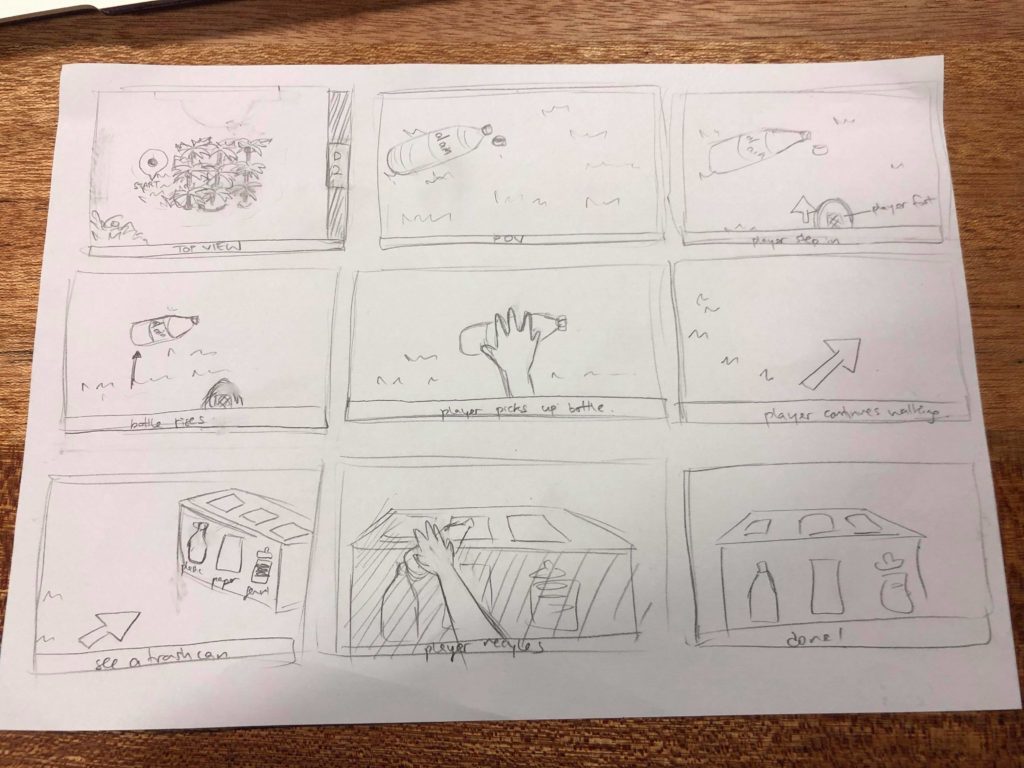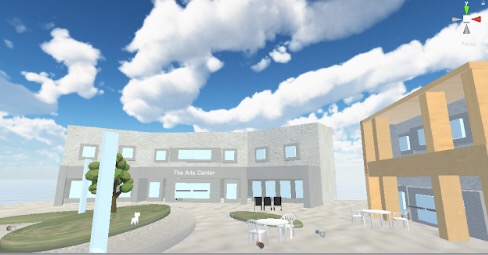For project #2, our group decided to build an experience that tackles the problem of sustainability on campus. We wanted to base our scene on campus, and there are trash on the ground. In the real world, if someone passes by trash, and ignores it, there are no consequences. Besides, people all have the mind set that someone else will act on that. We wanted to raise people’s awareness of the NYUAD community by creating an alternate reality where if people walks by a piece of trash without picking it up, they will receive negative feedback indicating that they are not acting in a proper way.
Besides, because of the diversity of the community, there isn’t a shared standard for recycling which everyone agrees upon. Always having been such an ignorant person about the environment, I really get confused when I throw an empty Leban bottle: should I put it in general waste or plastics? The bottle is definitely recyclable, but only after I clean the bottle. Recycling can be extremely complicated: I still remember that I was extremely shocked when the RA told us that we should recycle the lid for Starbucks cups but throw the paper cup into general waste. By creating an educational environment which mimics what actually happens on campus, we hope to teach people how to recycle in an entertaining way. Through the repeated interaction within our scene, users might be able to perceive recycling as less burdensome as they get more familiar with it.
Here is our storyboard, drawn by Lauren:

Some initial thoughts and designs:
Since the campus is kinda huge, and we only have limited space for interaction, we decided to limit our scene to the area (the small garden/square) between D2, A6 and the Arts Center. We think that this side is more populated, compared with the ERB side, since everyone comes to D2 for meals, and we can actually see Al Ain bottles and other trash lying on the benches.
In terms of feedback, we decided that when users get close enough to the trash, the trash will light up, indicating that users could interact with the object. When users put the trash into the correct trash bin, they will get a rewarding sound feedback. Otherwise, they will get a sound feedback that is negative, and will not be able to drop the trash into the trash bin.
For the ambience sound, we decided to use birds sound, because we actually have speakers attached to the palm trees on campus that play birds sound. This is not only a recreation of the campus environment, but also a sarcasm of how they try to make an illusion of something that does not exist on campus.
We split the work so that Ju Hee and I will be in charge of making the environment, while Lauren and Simran will be in charge of making the interactions.
During the class where we presented our initial ideas, Sarah suggested that the main focus of this project should be on the interaction. After discussing a bit on the environment, we decided that the scene does not have to be set on campus. I experimented with the environment and found a skybox of a block in Tokyo. Japanese society put a great amount of emphasis on recycling and eco-friendly lifestyle, so I think it make sense to place our interaction in Japan. But when we met again in class, we decided that we should still use the campus as our environment, and Lauren became passionate about making the environment, so she switched her task with mine.
Ju Hee and Lauren have built the environment, and our scene looks like this:

